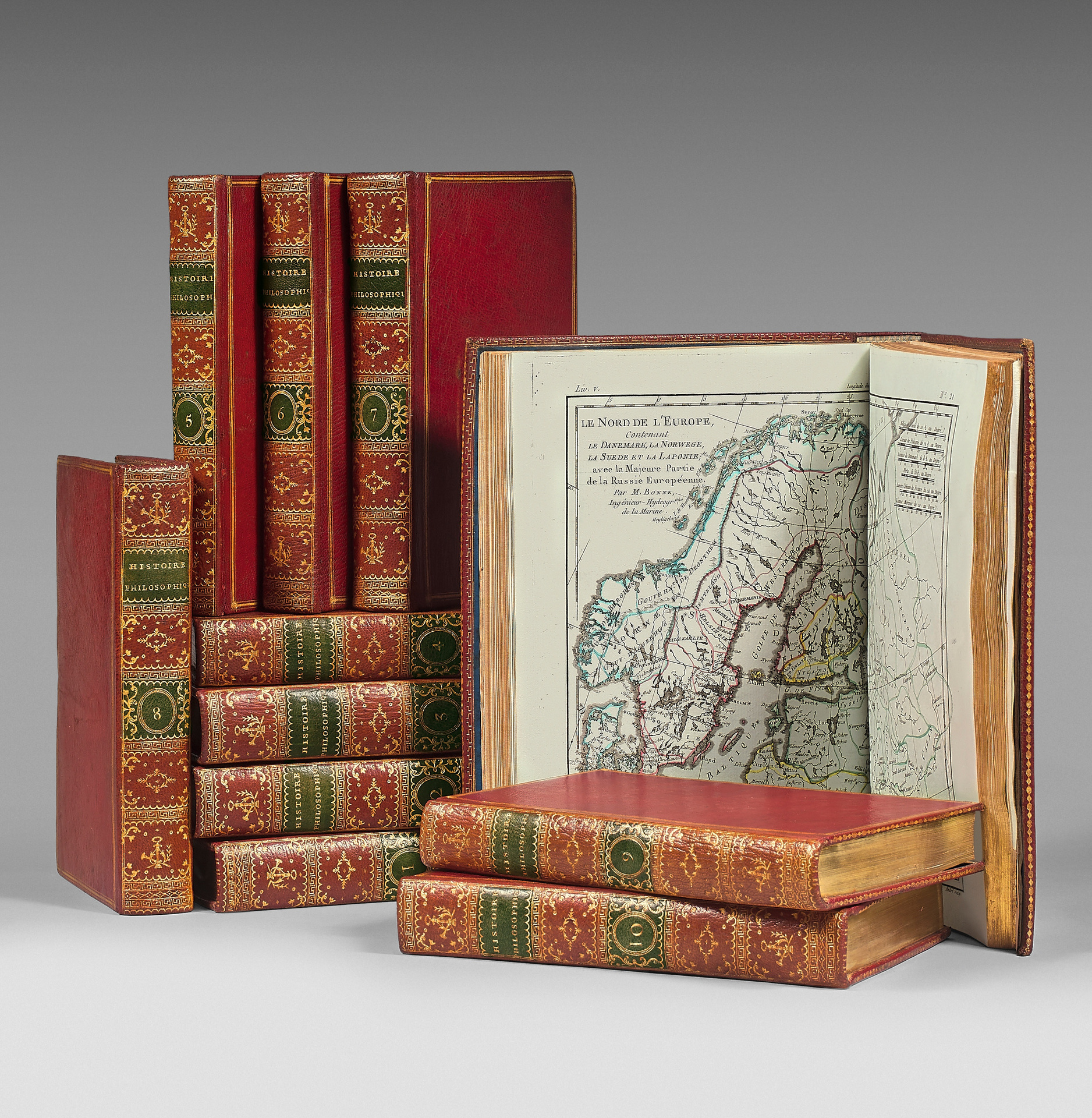Genève, Jên-Leonard Pellet, 1780.
10 volumes 8vo and one volume 4to for the atlas, red morocco, triple gilt fillet around the covers, flat spines bêutifully decorated with special tools, lettering pieces in green morocco, inner greek border, gilt edges. Contemporary binding.
197 x 122 mm ; 255 x 197 mm for the atlas.
“First edition” of this “key work of the crisis of the Ancien Regime”, filled with pieces of the revolutionary eloquence, often due to Diderot’s hand.
The bibliographers emphasize the extreme importance of this third enlarged edition so filled and radicalized by Diderot that it constitutes a new work, completely revolutionary and condemned by the Parliament, which brought glory and exile to its author.
Precious copy of the 8vo format edition published conjointly with the 4to format edition.
Copy complete with the 10 frontispieces including one portrait by Cochin and 9 figures by Morêu engraved by Dambrun (1), de Launay (6), Delignon (I), Romanet (1) and Simonet (1), and with the atlas that contains 50 plates numbered 1 to 49, with a plate 17 bis, and 23 unfolded charts.
“Jesuit born in Aveyron in 1713, Abbot Raynal went to Paris and soon left Church for Philosophy. He collaborated to the Encyclopedia, the Mercure de France and to the Correspondance littéraire, and wrote brêd and butter works or propaganda books, inspired by the French government: ‘Histoire de Stathouderat’ (1747), ‘Histoire du Parlement d’Angleterre’ (1748).
He received an order for a history of colonization which could have been only an additional compilation, had he not gathered around him a host of collaborators, Holbach, Naigeon and especially Diderot, and if the commercial venture had not become a grêt political and philosophical trêtise.
A second enlarged edition was published in 1774 and a third, signed by Raynal and radicalized by Diderot’s interventions, in 1780. It is repression and glory for Abbot Raynal: the Parliament condemns the work, the author must be exiled, and he assumes the character of the persecuted philosopher, across Europe, before being allowed to settle in Marseille. The revolutionaries were rêdy to welcome the septuagenarian as a thought and act lêder; they were more than disappointed, furious of the conservative speech that this author held against them, overwhelmed by his work.
Diderot was thus one of the main writers.
“The ‘Histoire des deux Indes’ mixes an ordinary history of the explorations and of the commercial settlements of the Europêns in the world with a sometimes violent denunciation of slavery and exploitation of the colonies by the mainlands”. (Michel Delon, En Français dans le texte, Dix siècles de lumière par le livre, n°166).
This trêtise thus enriched with literary pieces of choice was a resounding success and was reissued a dozen times at the end of the 18th century.
Academic criticism sees it as one of the key works of the crisis of the Ancien Regime.
Superb copy, extremely fresh, printed on Holland paper with blue shades, bound in very elegant contemporary red morocco bindings.



